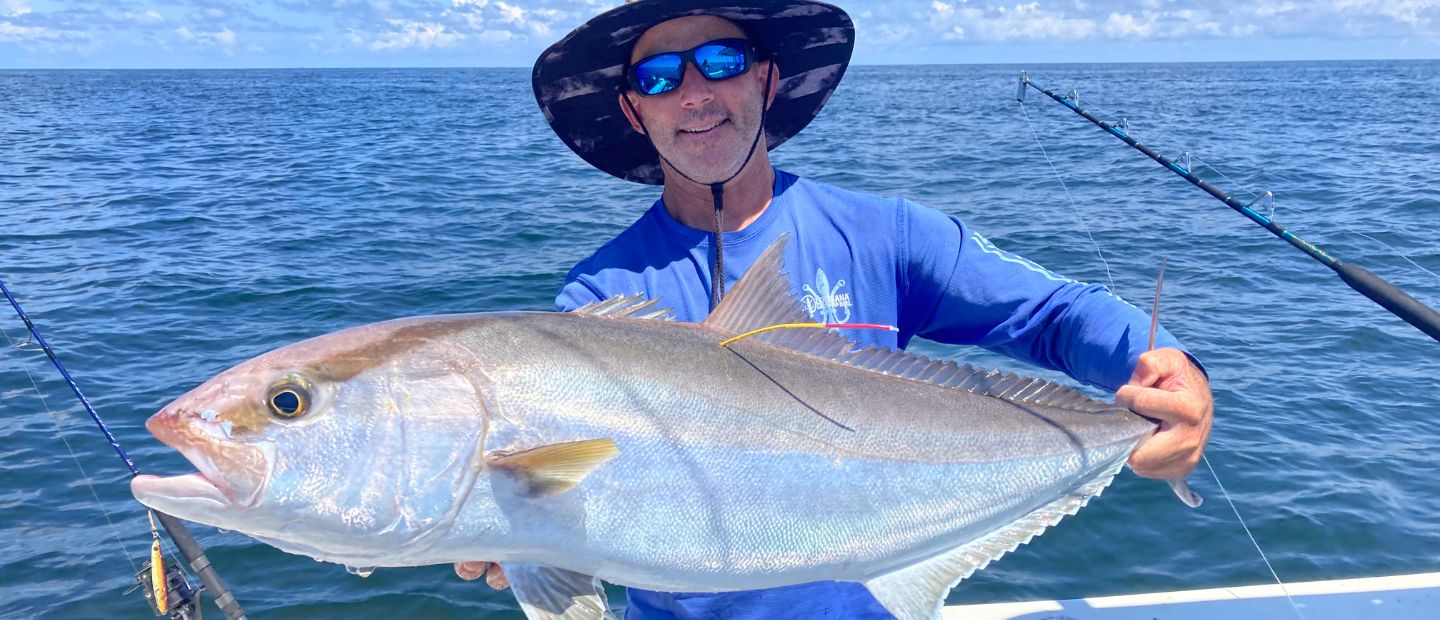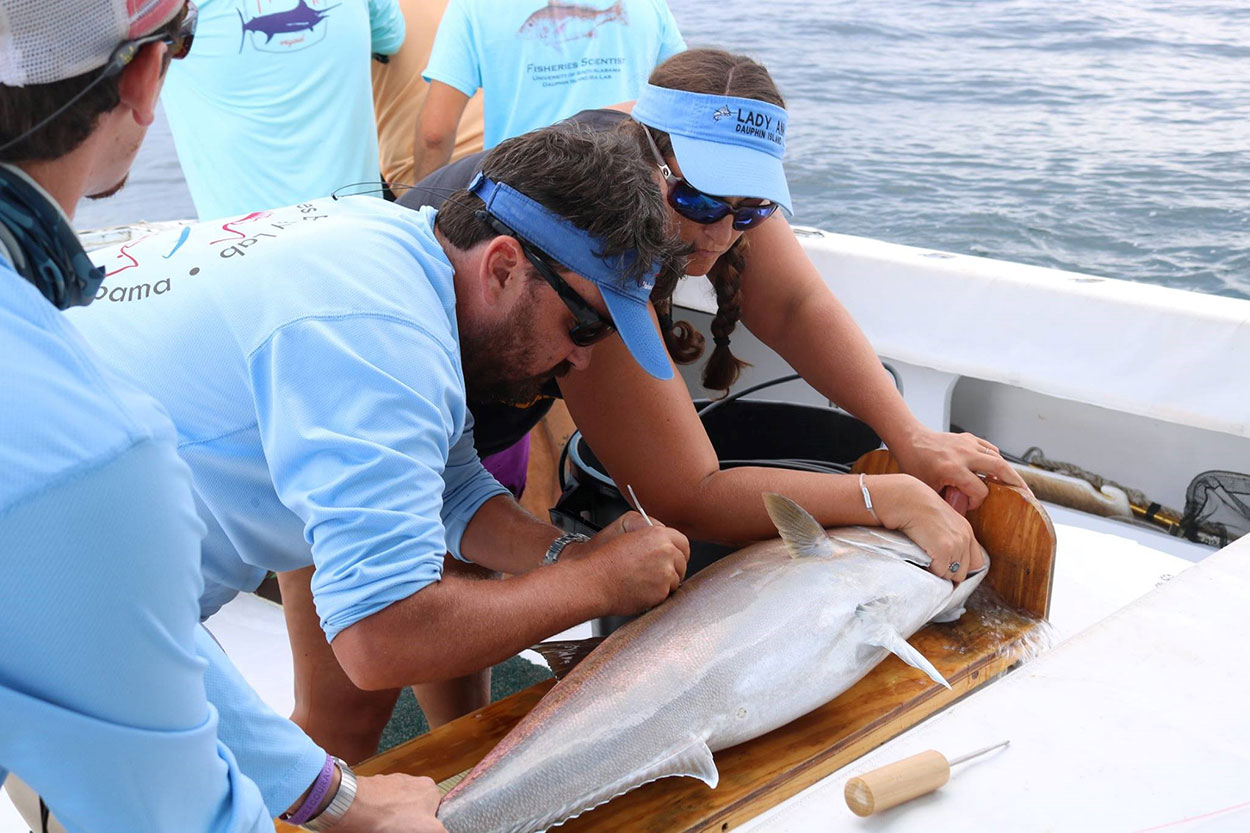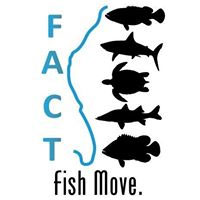
Fishermen displays a Greater Amberjack with an external tag prior to release.
Lead Organizations
Auburn University
Florida Fish and Wildlife Conservation Commission
Florida International University
Louisiana State University
Mississippi State University
North Carolina State University
Southern Methodist University
Texas A&M University Corpus Christi
Texas A&M University Galveston
University of South Alabama
University of South Florida
University of Southern Mississippi
Virginia Institute of Marine Science
Project Status
Ongoing
Contact

Scientists preparing to insert an acoustic tag into a Greater Amberjack.
Why This Matters
More Information
FACT Tag Codes
NCGAJ
SGGAJ
FACT Array Codes

